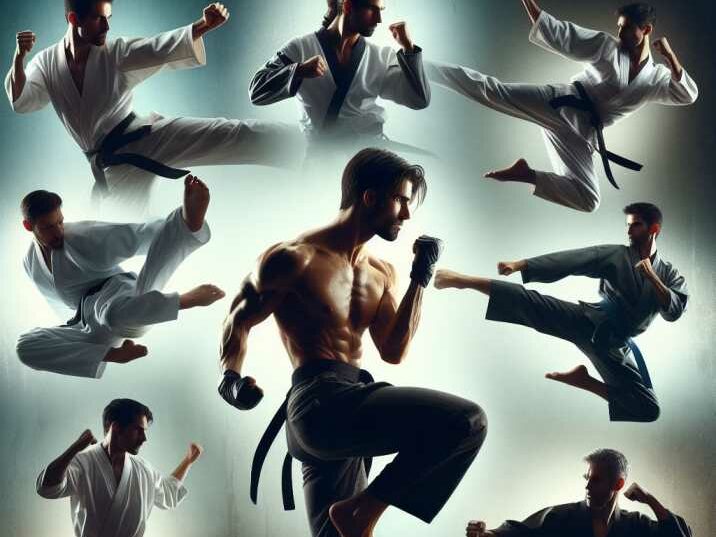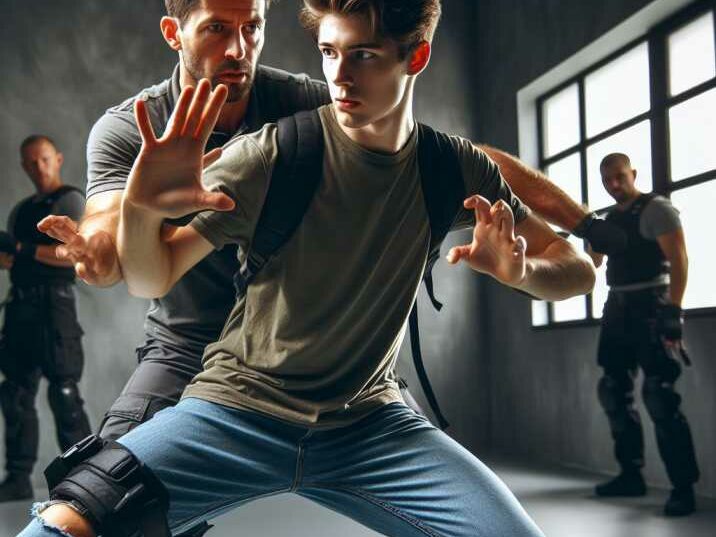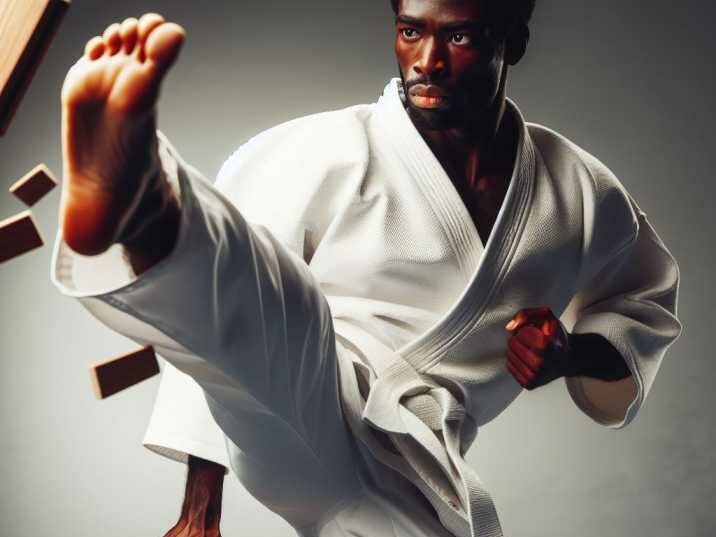Introduction:
Table of Contents
In an unpredictable world, knowing how to defend oneself is crucial. However, with a plethora of martial arts and fighting styles out there, it can be challenging to determine which one is the most effective for self-defense. In this comprehensive guide, we’ll delve into the world of defensive fighting styles, exploring their techniques, strengths, and weaknesses. By the end, you’ll have a clear understanding of the best defensive fighting style for your needs.

Table of Contents:
- Introduction
- Understanding Defensive Fighting Styles
- 2.1 Types of Defensive Fighting Styles
- Key Factors in Choosing a Defensive Fighting Style
- 3.1. Effectiveness
- 3.2. Practicality
- 3.3. Personal Preference
- Comparison of Defensive Fighting Styles
- 4.1. Krav Maga
- 4.2. Brazilian Jiu-Jitsu
- 4.3. Muay Thai
- 4.4. Boxing
- 4.5. Wing Chun
- 4.6. Taekwondo
- 4.7. Judo
- 4.8. Karate
- Conclusion
- FAQs
Understanding Defensive Fighting Styles:
Defensive fighting styles are techniques and strategies used to protect oneself from physical harm. These styles encompass various martial arts disciplines, each with its unique approach to defense. When considering which defensive fighting style to pursue, it’s essential to understand the different types available.
Types of Defensive Fighting Styles:
There are numerous defensive fighting styles practiced around the world, but some are more popular and widely recognized for their effectiveness. Here are some of the most prominent ones:
Krav Maga:
Originating from Israel, Krav Maga is a practical and efficient self-defense system. It focuses on real-world scenarios and teaches practitioners how to neutralize threats quickly using strikes, joint locks, and defensive techniques.

Brazilian Jiu-Jitsu (BJJ):
Developed in Brazil, BJJ is a ground-based martial art that emphasizes leverage and technique over strength. It teaches practitioners how to control and submit opponents through grappling and submission holds.
Muay Thai:
Hailing from Thailand, Muay Thai is known as the “Art of Eight Limbs” for its use of fists, elbows, knees, and shins. It is a highly effective striking art that incorporates punches, kicks, and clinch techniques.
Boxing:
Boxing is a classic combat sport that focuses on punching techniques. It emphasizes footwork, head movement, and precise striking, making it an excellent choice for those who prefer stand-up fighting.
Wing Chun:
Wing Chun is a Chinese martial art known for its close-range combat techniques and rapid strikes. It emphasizes relaxation, sensitivity, and efficiency in movement, making it suitable for practitioners of all ages and body types.
Taekwondo:
Originating from Korea, Taekwondo is characterized by its dynamic kicks and fast-paced movements. It focuses on both self-defense and physical fitness, making it a popular choice for practitioners of all ages.
Judo:
Judo is a Japanese martial art that emphasizes throws, takedowns, and grappling techniques. It teaches practitioners how to use an opponent’s strength and momentum against them, making it suitable for self-defense and sport.
Karate:
Karate is a traditional Japanese martial art that focuses on striking techniques such as punches, kicks, and knee strikes. It emphasizes discipline, respect, and self-control, making it an excellent choice for personal development as well as self-defense.

Key Factors in Choosing a Defensive Fighting Style:
When selecting a fighting style, several factors should be considered to ensure it aligns with your goals and preferences.
Effectiveness:
Consider the practicality and real-world applicability of the defensive fighting style. Look for techniques that are proven to be effective in self-defense situations, rather than relying solely on traditional or aesthetic appeal.
Practicality:
Choose a defensive fighting style that suits your lifestyle and physical abilities. Some styles may require more time, effort, and flexibility than others, so it’s essential to find one that you can commit to long-term.
Personal Preference:
Ultimately, the best defensive fighting style for you is one that you enjoy practicing. Consider your preferences regarding striking versus grappling, stand-up versus ground fighting, and the overall philosophy of the martial art.
Comparison of Defensive Fighting Styles:
To help you make an informed decision, let’s compare some of the most popular defensive fighting styles:
Here’s the comparison table for the defensive fighting styles:
| Fighting Style | Origin | Focus | Key Techniques | Popularized By |
|---|---|---|---|---|
| Krav Maga | Israel | Practical self-defense | Strikes, joint locks, defensive techniques | Israeli Defense Forces |
| Brazilian Jiu-Jitsu | Brazil | Ground fighting | Grappling, submission holds | Helio Gracie |
| Muay Thai | Thailand | Striking | Punches, kicks, clinch techniques | Thai fighters |
| Boxing | Worldwide | Punching | Jabs, hooks, uppercuts | Muhammad Ali |
| Wing Chun | China | Close-range combat | Rapid strikes, sensitivity | Ip Man |
| Taekwondo | Korea | Dynamic kicks | High kicks, fast-paced movements | Choi Hong Hi |
| Judo | Japan | Throws, takedowns | Throws, pins, submissions | Jigoro Kano |
| Karate | Japan | Striking | Punches, kicks, knee strikes | Gichin Funakoshi |
This table provides a comparison of the origin, focus, key techniques, and popularized figures for each defensive fighting style.
Conclusion:
Choosing the best defensive fighting style is a personal decision that depends on various factors such as effectiveness, practicality, and personal preference. By exploring different martial arts disciplines and understanding their techniques and philosophies, you can find the style that suits you best. Whether it’s Krav Maga for practical self-defense, Brazilian Jiu-Jitsu for ground fighting, or Muay Thai for striking, the key is to find a style that resonates with you and empowers you to protect yourself and others.
FAQs:
- Which defensive fighting style is the most effective?
- The effectiveness of a defensive fighting style depends on various factors, including the practitioner’s skill level, the situation, and personal preferences. However, styles like Krav Maga, Brazilian Jiu-Jitsu, and Muay Thai are widely regarded as highly effective for self-defense.
- Can anyone learn defensive fighting?
- Yes, anyone can learn defensive fighting regardless of age, gender, or fitness level. Many martial arts schools offer classes for beginners and cater to individuals of all backgrounds.
- Is it necessary to be physically fit to practice defensive fighting?
- While being physically fit can be beneficial, it’s not a requirement to practice defensive fighting. Many martial arts disciplines offer training programs suitable for people of varying fitness levels, allowing individuals to improve their strength, flexibility, and endurance over time.
- How long does it take to become proficient in a defensive fighting style?
- The time it takes to become proficient in a defensive fighting style varies depending on the individual’s dedication, natural abilities, and the complexity of the style. Generally, consistent practice and dedication are key factors in progressing and mastering martial arts techniques.
- Are defensive fighting styles suitable for children?
- Yes, many defensive fighting styles offer programs specifically designed for children, focusing on discipline, respect, and self-defense skills. However, it’s essential to choose a reputable martial arts school with experienced instructors who prioritize safety and age-appropriate training methods.


